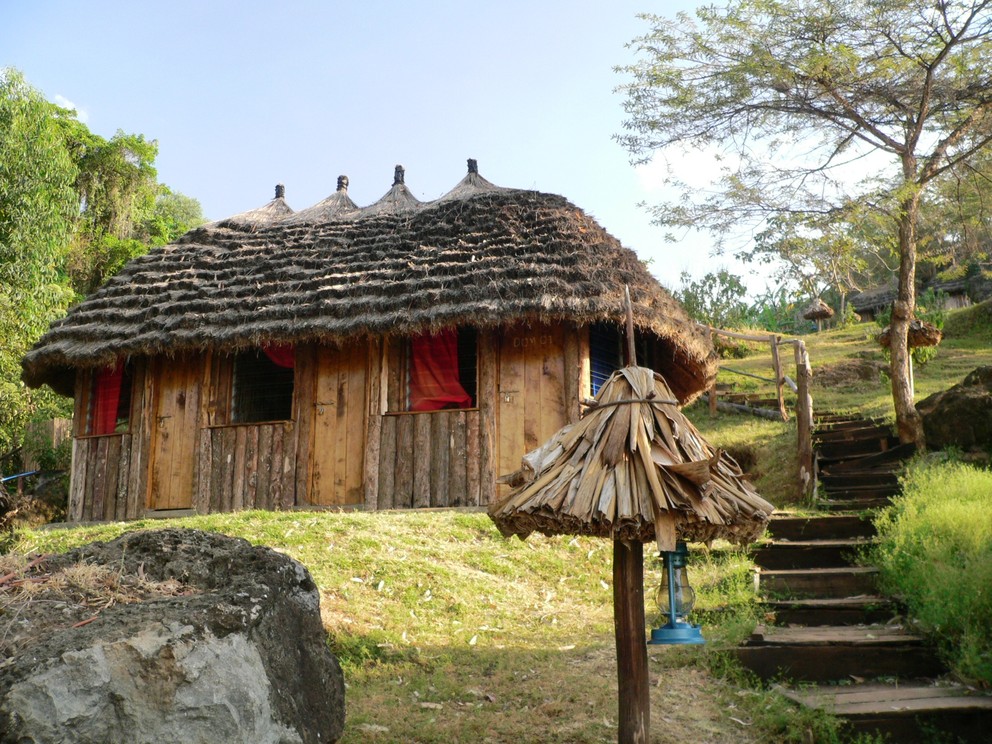“People want to build a good house, everyone wants to have a good house,” said Khanjan Mehta, director, Humanitarian Engineering and Social Entrepreneurship Program and assistant professor of engineering design. “But what makes a good house? Is it wood, steel, concrete or bamboo?
“It all depends on the context. In some places steel and concrete are perfect, while straw bales and bamboo are optimal in other places. We should be evaluating what is economically, socially and environmentally sustainable at the necessary scale in a given location,” he said.
Mehta acknowledges that often, indigenous housing is temporary housing. Seasonally or yearly it needs to be repaired or replaced due to weather and use damage. However, switching to permanent concrete-block construction is not necessarily the answer. In many places in Africa and South East Asia, cement — the major component of concrete — is scarce and or expensive.
“In Zambia, I was in a small village, and the concrete walls moved if someone leaned on them,” Mehta told attendees at the annual meeting of the American Association for the Advancement of Science today (Feb. 12) in Washington, D.C.
He explains that if cement is expensive, workers will use the least amount of cement they can and instead add more easily accessible sand to the concrete. This mix, however, does not have the strength or longevity of properly mixed concrete.
“In Western Kenya, on the shores of Lake Victoria, all the houses now have tin roofs,” said Mehta. “Ten years back, no one had a tin roof and now tin roofs are called by the name of the company that makes them.”
This branding reflects the fact that there is only one manufacturer of tin roofs, which creates a monopoly that could lead to price manipulation.
According to Mehta, one project, a windmill farm, failed because of dependence on a single supplier of steel. The material became so expensive, the windmills could not be built.
“What we need to find are materials that are economical, environmentally friendly and socially acceptable,” said Mehta. “The materials also need to be scalable.”
Cutting down forests to plant bamboo as building material is not the answer, according to Mehta. Individuals can use locally available but scarce materials to build their individual homes, but that strategy will not build all the houses in a city or village because it cannot be scaled up to meet the demand.
“Can we grow mushrooms and process them into a strong packaging material or fiberboard for construction?” said Mehta. “We need cross pollination from different areas to come up with acceptable choices to meet these challenges.”
Not only would mushroom farming and materials processing from the mushrooms be sustainable, but it would also create jobs, which is an important factor because over half of the youth in sub-Saharan Africa are unemployed.
Another approach uses locally thrown pottery vessels as the layer between a subroof and the final roof. The pots are all uniform, easily manufactured and inexpensive. Their installation on the roof provides an air space as insulation so that other, more expensive, materials are not needed.
“There are currently few practical approaches, but everyone wants a permanent home,” said Mehta. “Temporary houses are probably a better choice for some because they incorporate different cultural designs.”
The Maasai people of southern Kenya and northern Tanzania built stick structures tied with string and coated in mud and dung for insulation. Periodically they needed to add another layer of mud and dung. Now, many Maasai build with tin roofs. The hole that used to be left to let in the morning light no longer exists and the houses are more difficult to maintain and to move.
“People see western stuff as better, more modern and therefore they think it is good,” said Mehta. “Traditional homes can be just as cool, and maybe more sustainable.”
By – A’ndrea Elyse Messer
Source: Penn State/News
http://news.psu.edu/story/392268/2016/02/12/research/not-your-grandfathers-house-maybe-it-should-be
 Translate
Translate





